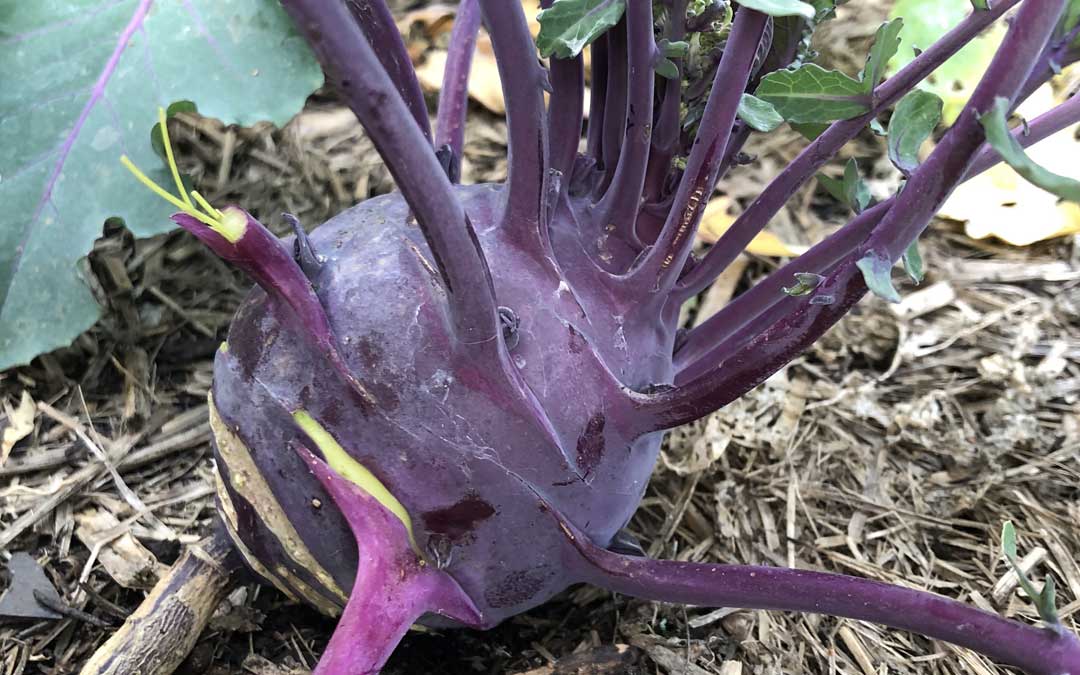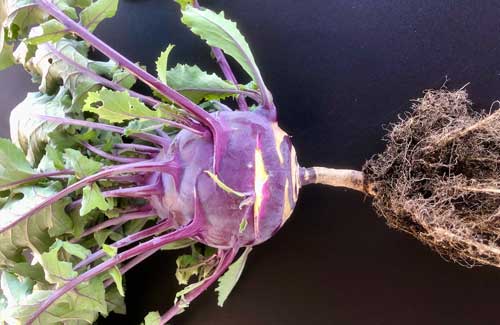Growing kohlrabi – king of the cabbages

What is kohlrabi?
It is hard to imagine why kohlrabi is not cultivated more often as it is easy to grow, crops twice a year and is delicious raw or cooked.
There are two types of kohlrabi in Australia – white (or light green) and the princely purple. Both grow a bulb about the size of a tennis ball above the soil, and the leaves emanate from this bulb in a sculptural fashion. Kohlrabi has a sweet taste and crisp texture.


How to grow kohlrabi
Kohlrabi can be planted in punnets or directly into the ground and later thinned. It is a prolific germinator. And for this reason, planting directly will give it a head start and avoid transplant shock.
Kohlrabi is planted a month before the last expected frost in spring, and in late summer for a winter crop. It likes cool weather and is frost tolerant. In fact, frost can make it taste sweeter.
Choose a position that receives 6 full hours of sun a day and is well drained, moist, and rich in organic matter. The pH needs to be between 6 – 6.8. Plant kohlrabi seed 1 cm deep and space 10 – 15 cm apart in rows 30 – 45 cm apart. Planting too closely will result in the bulbs not forming so thinning is essential if seed is directly sown. Other reasons for bulb failure are poor soil, nutrient deficiencies or inadequate watering. Bulbs mature in 45 – 60 days
Bad companion plants include peppers, climbing beans, peas, strawberries and tomatoes so avoid planting within 2 metres of these. Good companions include onions, cabbage family (of which they are a member), cucumbers and the beet family.
Pests common to kohlrabi
As a member of the cabbage family, kohlrabi plants need protection from white cabbage butterfly. Fine netting secured at the bottom to completely enclose the plants works best. Slugs and snails are also a nuisance and will largely be kept out by netting but some snail bait will deal with any intruders. Look out for aphids too on the stems and backs of leaves and spray with soapy water until ladybirds arrive to devour them.
How to use kohlrabi
Whether raw or cooked, kohlrabi needs to be peeled as the skin is fibrous. The bulb is delicious raw as a main ingredient, paired with crisp apple in a salad, or as a crunchy, additional ingredient in a mixed salad. Cooked, it goes well in stir fries and can be roasted in a variety of ways. The leaves including the thinnings can be eaten in salads or used as a spinach or silverbeet in soups, pies or even pesto.
Do you have any great kohlrabi recipes? Please share in the comments below we’d love to hear them!
Written by Robin Gale-Baker
